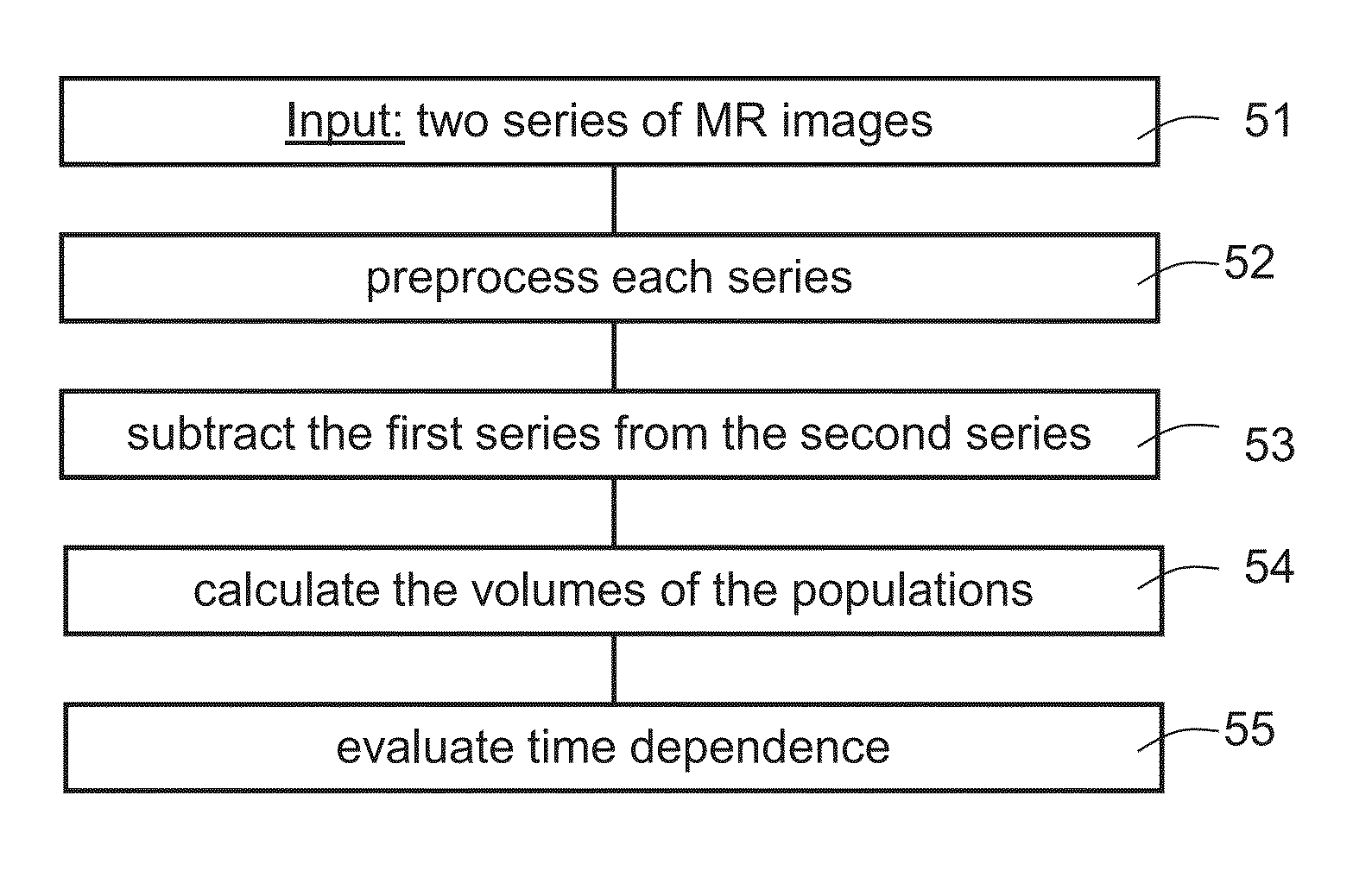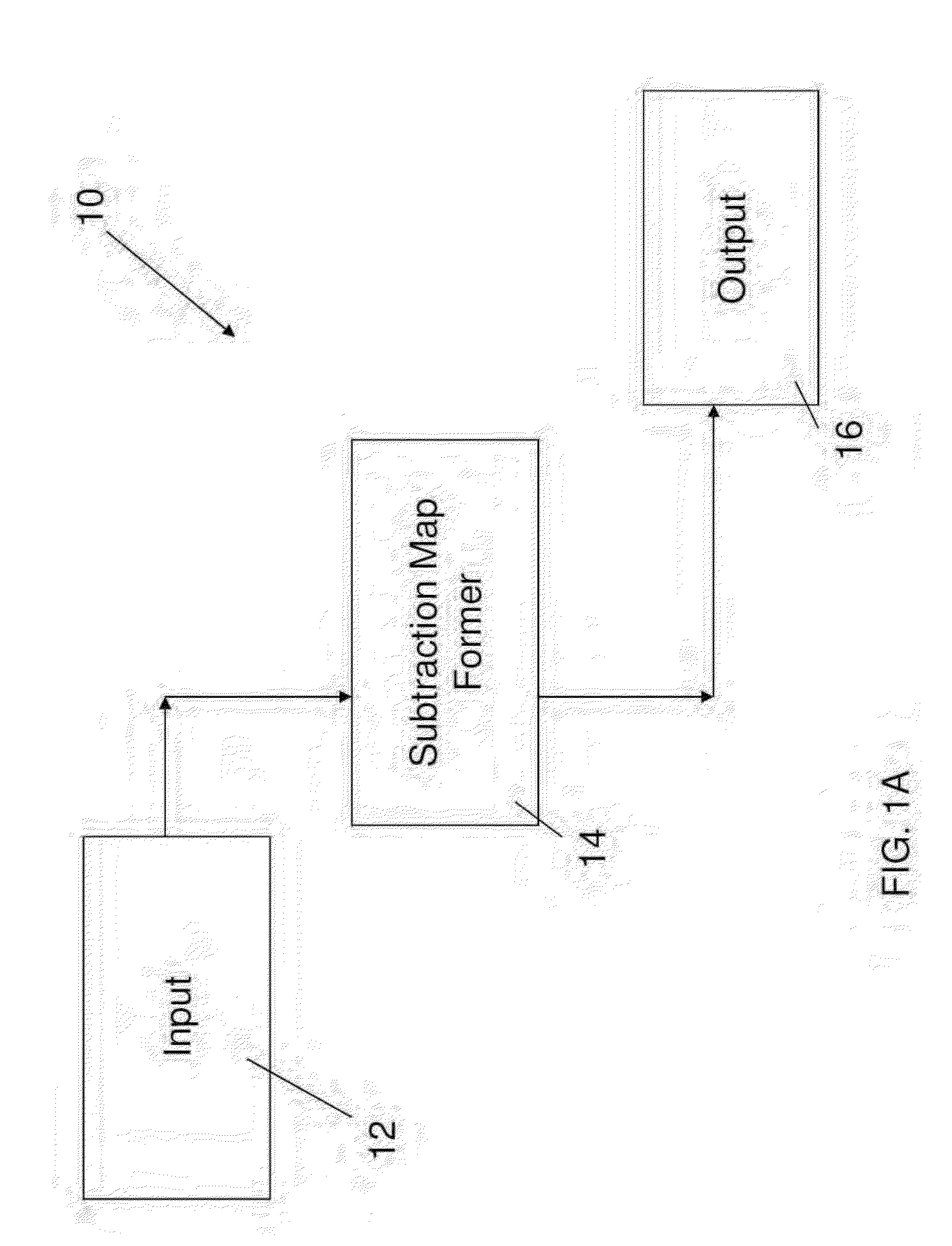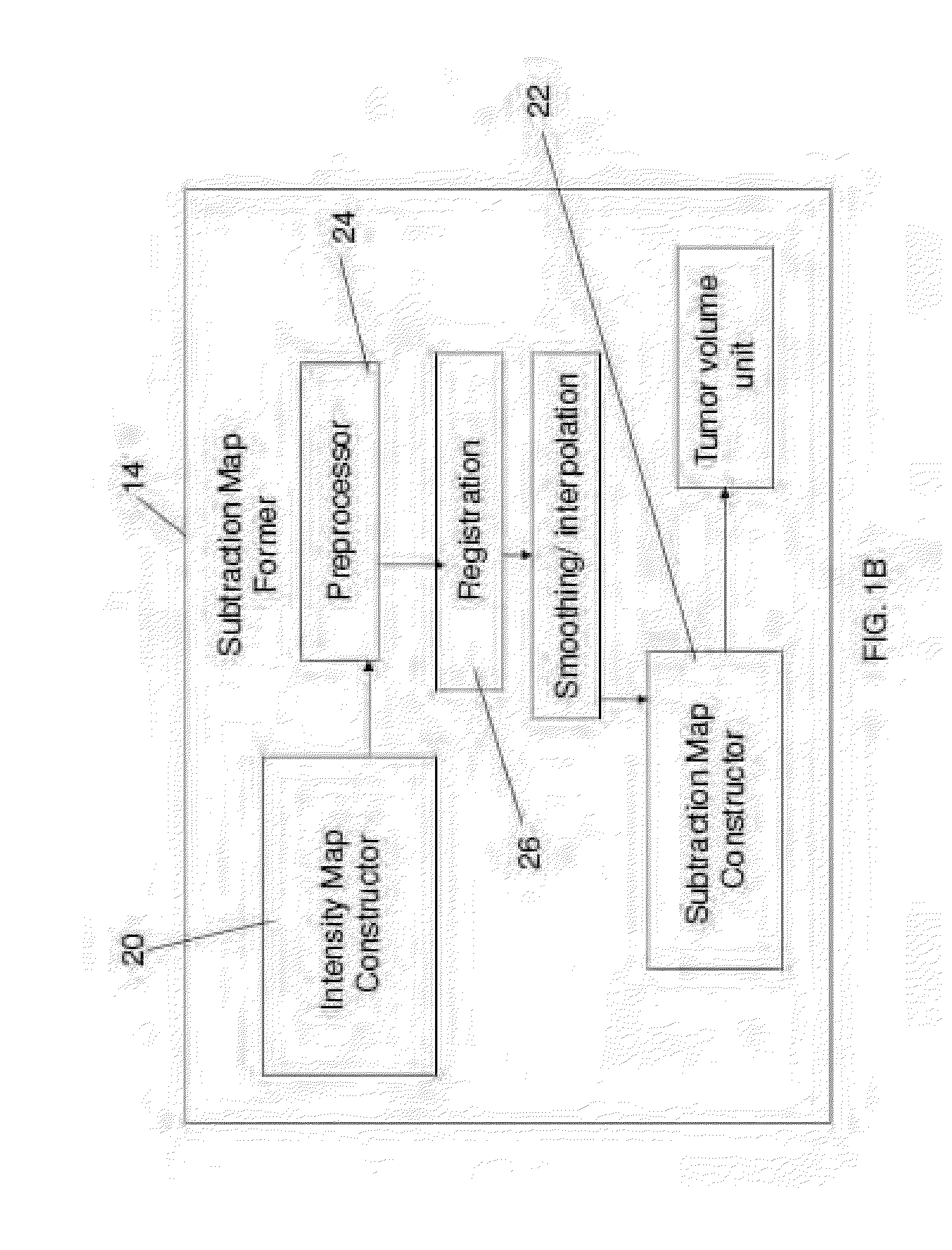Magnetic resonance maps for analyzing tissue
a magnetic resonance map and tissue technology, applied in the field of magnetic resonance map, can solve the problems of limiting the validity of a progression free survival end point, low specificity of standard mr map sequence, premature discontinuation of effective adjuvant therapy,
- Summary
- Abstract
- Description
- Claims
- Application Information
AI Technical Summary
Benefits of technology
Problems solved by technology
Method used
Image
Examples
example 1
[0192]Referring now to FIG. 2A, an example of newly diagnosed GBM involves 49 year old male. The patient, with newly diagnosed GBM, underwent gross total resection at Sheba Medical Center followed by chemoradiation. The patient was recruited to the present study 1 week after chemoradiation with clinical deterioration. Conventional MRI showed a large partially enhancing lesion with low rCBV (FIG. 2A top). The maps (FIG. 2A below) showed that only part of the enhancing volume (on T1-MRI) consisted of morphologically active tumor (blue):
[0193]The patient was stabilized on steroids. The neuro-oncologist was determined to continue treatment with TMZ. The neurosurgeon was concerned surgery may be necessary. Referring now to FIG. 2B, the patient was rescanned 2.5 weeks later. Conventional MRI (including T1, T2, FLAIR, DWI and DSC PWI) showed no significant change. The maps (FIG. 2B below) showed significant increase in the active tumor volume with the addition of light blue regions surroun...
example 2
Newly Diagnosed GBM
[0198]A 50 year old male with newly diagnosed GBM underwent gross total resection at Sheba Medical Center followed by chemoradiation. 1 month after chemoradiation, increased enhancing volume was noted on contrast-enhanced T1-MRI with no clinical deterioration. PWI was inconclusive. The patient consulted with physicians at Sheba and Hadassah Medical Centers who could not advise whether he should be operated or continue TMZ treatment since they were unable to determine if the radiological deterioration was due to tumor progression or treatment effects. Referring now to FIG. 5, the patient was recruited to our study and his maps (FIG. 5A bottom) showed significant volume of active tumor (blue) surrounding the previous surgery site:
[0199]Therefore, it was decided to re-operate on the patient.
[0200]In this case, as per FIG. 5B, histology did not show a high density tumor and very little mitosis. But there were many clusters of small cells which raised suspicions of pro...
example 3
Recurrent GBM
[0205]Referring now to FIG. 8, a 58 year old male with recurrent GBM was recruited 7 month after diagnosis prior to initiation of Bevacizumab treatment. At diagnosis the patients was operated on and received chemoradiation followed by TMZ. Six months later, at progression, the patient underwent a second resection and was recruited to the present Bevacizumab study 1 month after the second surgery, prior to initiation of the Bevacizumab treatment. At this point his enhancing lesion consisted of nearly 50% tumor according to the maps. Three months after initiation of Bevacizumab treatment conventional MRI showed improvement but the maps showed significantly larger blue / tumor volume, consistent with clinical deterioration. Following this scan the patient was treated with re-irradiation (in parallel with continuing Bevacizumab) and was stabilized. The next follow-up showed no significant change on conventional MRI but significant treatment response in the maps (a large perce...
PUM
| Property | Measurement | Unit |
|---|---|---|
| time | aaaaa | aaaaa |
| time t1 | aaaaa | aaaaa |
| size | aaaaa | aaaaa |
Abstract
Description
Claims
Application Information
 Login to View More
Login to View More - R&D
- Intellectual Property
- Life Sciences
- Materials
- Tech Scout
- Unparalleled Data Quality
- Higher Quality Content
- 60% Fewer Hallucinations
Browse by: Latest US Patents, China's latest patents, Technical Efficacy Thesaurus, Application Domain, Technology Topic, Popular Technical Reports.
© 2025 PatSnap. All rights reserved.Legal|Privacy policy|Modern Slavery Act Transparency Statement|Sitemap|About US| Contact US: help@patsnap.com



